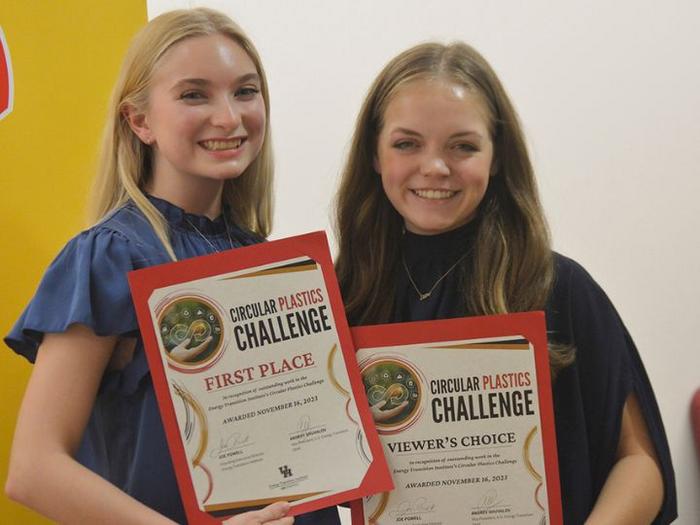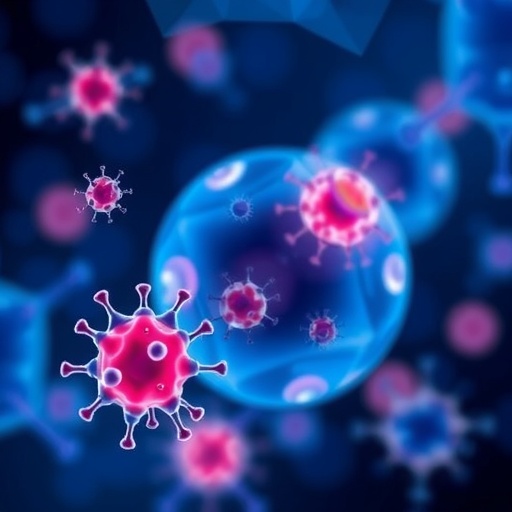Plastics are firmly entrenched in today’s world thanks to their cheap, light and versatile nature, but the downside is that plastic waste continues piling up. Earlier this year, United Nations Secretary-General Antonio Guterres said that every day, the equivalent of over 2,000 garbage trucks full of plastics is dumped into our oceans, rivers and lakes.

Credit: Please credit University of Houston.
Plastics are firmly entrenched in today’s world thanks to their cheap, light and versatile nature, but the downside is that plastic waste continues piling up. Earlier this year, United Nations Secretary-General Antonio Guterres said that every day, the equivalent of over 2,000 garbage trucks full of plastics is dumped into our oceans, rivers and lakes.
According to the World Economic Forum, the United States only recycled about 6% of the 40 million tons of plastic waste it generated in 2021. Around the world, about 400 million tons of plastic waste is produced each year. Much of it ends up in landfills, oceans and natural habitats, negatively impacting the environment, human health and wildlife. The solution, according to many experts, lies in establishing a sustainable circular plastics economy.
With that in mind, University of Houston’s Energy Transition Institute (ETI) challenged students to address the critical issue of dealing with plastic waste and creating a real-world circular economy. Over 60 students participated in the first Circular Plastics Challenge. The field of competitors was pared down to six finalist teams, who presented their solutions at the 2023 Energy Night hosted by the UH Energy Coalition. The final pitches ranged from renewable packaging and replacing plastic products with more sustainable material to using drones to limit excess packaging, transportation emissions and more.
“If you look at the wide variety of proposals and approaches, you can see the complexity of the problem and all the different things that society must consider to find solutions,” ETI Founding Executive Director Joe Powell said. “I think circularity in plastics and chemicals is as difficult to address as the net-zero issue within the energy sector, if not more. We have a unique opportunity here to tackle both, and it’s really great to see our students thinking ahead.”
BeadBlocker, a team of two students – Sarah Grace Kimberly and Emma Nicholas – was the challenge winner. The team proposed using a liquid-based membrane filter inserted into household drains to combat micro plastics found in many personal care products, such as makeup and hygiene items. The membrane would function as a magnet of sorts, attracting and capturing micro plastics from wastewater in showers and sinks.
The filter, according to Kimberly and Nicholas, not only shines a light on one of the world’s more unheralded yet damaging waste source, but it effectively stops pollution at the source and could significantly curtail the 5.4 million metric tons of micro plastics that enter water annually.
“We wanted to provide a simple solution to a growing problem,” Kimberly said. “Before we did this project, we didn’t know that microplastics existed, let alone in our makeup. I didn’t know I was basically putting plastic on my face every single day and washing it off into our drains. Because it’s an unseen problem, it’s hard to address.”
The idea was so well received that the duo, both juniors at the C.T. Bauer College of Business, also won the viewer’s choice award from their peers, a sign that this could be a small yet highly practical tool in developing a circular economy.
“We’d love to explore any possible options into making this a real thing as opposed to just a concept or idea,” Nicholas said.
Other finalists included:
- Wolff Center for Entrepreneurship quartet comprised of seniors Nicolas Einarsson, Bennett Mainini, Arianna Chavarria, and Fernanda Ruelas secured second place with their presentation titled “ShipSafe,” a renewable packaging company dedicated to aiding companies in transitioning to cleaner supply chains.
- Reverse Logistics with industrial engineering doctoral students Hasti Seraji, Farzane Ezzati, and Haowei Yang earned third place for their cost-efficient approach to recycling packaging through consumer-driven reverse logistics, involving the return of packaging to distribution centers for repurposing and recycling.
- Bottle Caps, an interdisciplinary team – with Guilherme de La Penha, a mechanical engineering senior; Lara Foster, pursuing her M.B.A.; Maryam Amini, pursuing a master’s degree in finance; and Hadi Zanganeh Kia, pursuing a doctorate in atmospheric sciences and meteorology – clinched fourth place. The team’s innovative idea involved replacing plastic bottle and container caps with caps made from PLA/PHB filaments, which are plant-based and biodegradable.
- Smart Waste Disposal, with supply chain and logistics technology seniors Vanessa Davis, Karina D., Sardar I., Ronaldo Quiroz, and Munif Momin won fifth place. The team proposed an artificial intelligence-based waste disposal solution that facilitates effective waste separation in public settings, ensuring recyclable materials are kept apart from non-recyclable waste.
- Last Mile Delivery comprised of supply chain and logistics technology students Caleb Bihogo (freshman) and Christian Sallese (junior) secured sixth place with their proposal to employ drone technology in the “last mile delivery” of commercial packages to reduce excess packaging and emissions.
Powell is proud of the breadth and depth of the submissions and overall response from students and judges from industry.
“In terms of impact and thinking about circularity and coming up with out-of-the-box solutions, we’re off to a great start at the University of Houston, that’s what we’re here for,” Powell said. “It’s a really complex problem to go after, and I give the student teams credit for putting solutions together and showcasing some really innovative thinking.”
The Energy Transition Institute is an academic research institute focused on advancing reliable, affordable, environmentally responsible energy for all through a just and equity-driven pathway. The ETI aims to benefit vulnerable communities and focuses on three verticals: carbon management, hydrogen and circular plastics while growing the mission of the University of Houston and UH Energy in student development, top tier research, and thought leadership delivered via partnership with existing colleges, departments, centers, and institutes.
UH, a Carnegie-designated Tier One Research University, encourages students at all levels to engage in innovative and meaningful research. It is this relentless commitment to student success, cutting-edge research and real-world impact that is driving the University closer to realizing its vision of becoming a top 50 public university in the nation.




